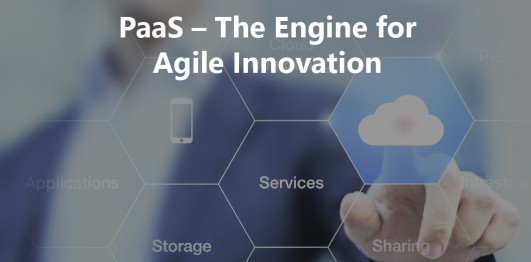The Internet is an exponential environment. With more technology choices, development strategies, and varied products available than ever before, businesses continue to seek out ways to differentiate themselves.
It’s been estimated that 90% of the world’s data has been generated in the past two years and that information doubles every year and a half. With so much data available, innovation and differentiation can be expensive propositions. Business owners around the world lie awake at night wondering what their businesses can build, buy, or adapt to help introduce new products faster and better than the competition.
The key to innovation today is iterative software development, and every business that develops software as its product, or for use in any other aspect of its business, must find ways to do it faster and better. That means that the roads to failure and success are equally fast. Iteration is the key—modern application lifecycles and DevOps practices are becoming mainstream. Cloud computing has changed the application development landscape. Today’s leaders have a choice; continue with status quo and fall further behind or choose a new road.
Paas: The Road to Agility
Traditional software development projects start with understanding and estimating hardware needs required to achieve the desired goal. Budgeting, procurement, and provisioning are neither fast nor cheap. In fact, being hindered by infrastructure acquisition can finish a project before it ever gets off the ground. Competitor innovation and market conditions move faster than that.
Enter the Platform-as-a-Service (PaaS) paradigm. PaaS effectively removes infrastructure from the planning stages of product development. With a PaaS in place, product teams are free to design pure products based solely on market needs, in terms of features and functionality, rather than the entire project being colored by infrastructure needs and budget constraints.
PaaS unlike Infrastructure-as-a-Service (IaaS) requires less maintenance which frees up your team to iterate on ideas and deliver business value instead of worrying about patch management and configuration. In addition, a cloud-based platform allows your team to provision resources on an as-needed basis, and pay only for what you use. This removes the business’s fear of failure. It’s no longer an expensive proposition to deploy resources for a proof of concept or start the journey towards your next “big thing.”
Friction, Speed
Perhaps the most important aspect to software product development is friction. Friction is any point along the product path where your teams spend cycles performing non-value added activities. Identifying and eliminating waste from your development cycle is a critical business concept.
It makes sense, then, that you should remove friction from your process, making it as easy as possible to get your product—whether it’s a large product or a simple software update—to market faster. Etsy, the homemade products marketplace site, reportedly updates their code more than 30 times per day[1]. Tesla Motors sends software updates to their cars whenever needed, rather than waiting for a service call. Even the Google search algorithms are updated multiple times per week.
With the tools available today, there’s no need to wait. PaaS is an ideal platform to reduce friction and increase speed. Resources can be provisioned on demand via a web interface or programmatically via an API. Updates and patches to the underlying infrastructure are performed by the provider, again, freeing up your staff to focus on the business. Your application can also be “intelligent” to scale automatically up or down based on load. Mature organizations even take this one step further and provision/configure environments prior to a deployment. This ensures the application is developed and tested on known good configurations eliminating configuration drift and the dreaded “no-repro” or “works on my machine” scenarios.
Startups are key users of PaaS systems because there are no tethers to legacy systems that must be maintained, but any business can take advantage of PaaS technologies in the cloud, like Microsoft’s Azure platform. And even if you don’t possess the skills in-house to navigate your way through the PaaS door, there are consultants available who can become key members of your strategy team, allowing you to move faster than your competition and eliminate friction.
When in place, a solid PaaS strategy will remove friction in the following ways: development teams can focus on code, rather than infrastructure; provisioning and deployment process bottlenecks are eliminated and patching or maintaining server operating systems is no longer needed. Organizations can truly optimize and gain maximum ROI from their investments in a cloud strategy.
RBA: An Agile Partnership
Ultimately, the Cloud is about delivering business value through the deployment of services and experiences that delight your employees, customers, partners, and other stakeholders. Partnering with RBA ensures you’ll get there in a way that minimizes risk and expense and maximizes your success.
It starts with strategy, not technology. RBA will learn about your business objectives and work with you to map out a plan for how to leverage the benefits of the cloud to achieve those objectives. We have been successfully implementing Microsoft Azure solutions since the platform was introduced so our team consists of some of the initial thought leaders in cloud architectures, modern software development and DevOps.
Our team has hands-on experience implementing cloud solutions for clients using a proven methodology. We’ve seen what works—and what doesn’t. We’ve overcome roadblocks. We can bring that expertise to bear on your project.
When it comes to moving to the Cloud, there are multiple options. Learn more about the competitive advantages of the Cloud and how to determine the right Cloud platform for your organization by downloading RBA’s white paper, Gaining a Competitive Advantage with Platform-as-a-Service (PaaS).
[1] Gartner (2014) “PaaS: Open For Business.” White Paper.





